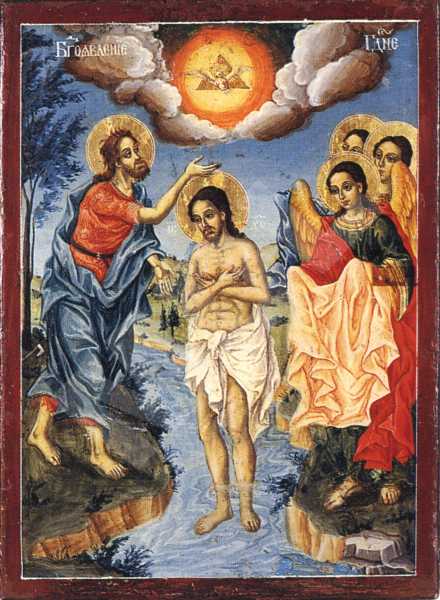The Baptism of Jesus Christ
Type:
Icon
Period:
The beginning of the
19 century
Toma Vishanov-Molera, born around 1750, painter of icons and murals, founder of the Bansko school of art. He grew up in the family of the clergyman Vishan. Around 1765 he went to Vienna, where he studied painting. It is not known who were his teachers there or when he returned to Bansko. His fellow villagers called him the Moler, Molera(from German Maler ‘painter’), whence the entire family's surname. Under the influence of the European 18th century art Toma Vishanov painted his works in a new manner, unknown until then in Orthodox art. The figures are realistic, vivid, expressive. Toma Vishanov is an innovator in the early period of Bulgarian Renaissance. His ideas on art were not understood and at first were rejected by his contemporaries. His work has not been studied extensively. He died after 1811 in Bansko.
Dimmensions (cm):
28
/ 22.3
/ 2.5
Location
Country: Bulgaria
Province: Blagoevgrad
Town: Bansko
Church: St. Trinity
Source
Country: Bulgaria
Province: Blagoevgrad
Town: Bansko
Church: St. Trinity
Description
The iconography treats the theme in a traditional manner. Christ takes the central part of the icon. On his left-hand side is the figure of John the Baptist, who is baptising Christ with the traditional gesture of blessing. On Christ's right hand side are the figures of three angels, the first of them holding a white towel to cover the body of the Saviour. Christ is with his feet in the waters of the river Jordan. Painted above the mentioned figures is a flying dove - the symbol of the Holy Spirit, surrounded by clouds and a radiance. The work is a very colourful and fresh one, a landscape being painted in the distance in the background.
Iconographical technique: Tempera
Base material: Wood
The icon's base is made of two softwood panels, joined by means of two inserted beams. The ground coat is of plaster, laid in a thin layer.
State, restoration traces and comments
There are no traces of any previous restoration work.


